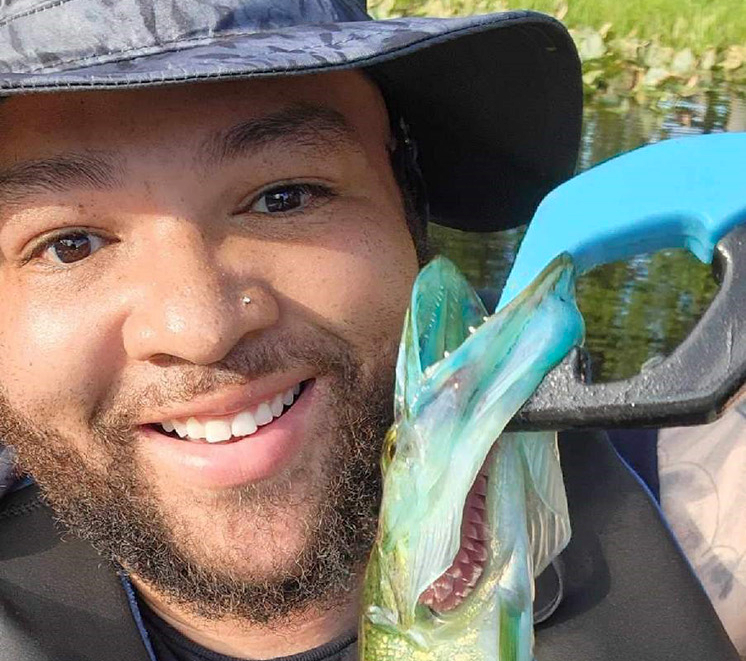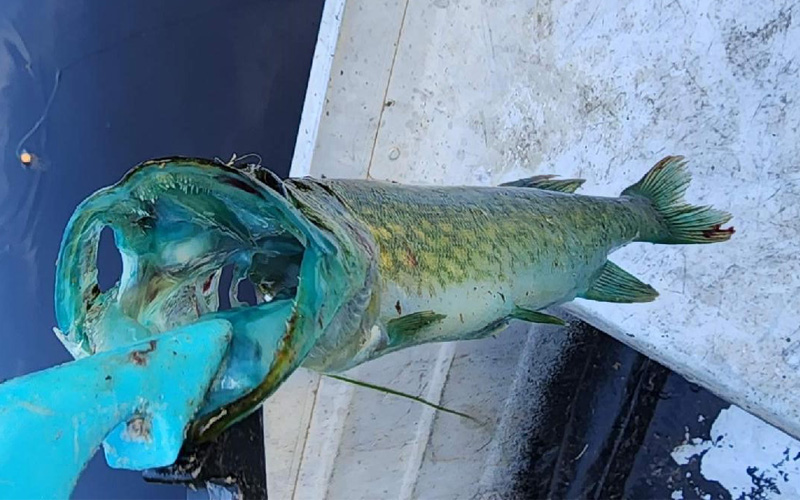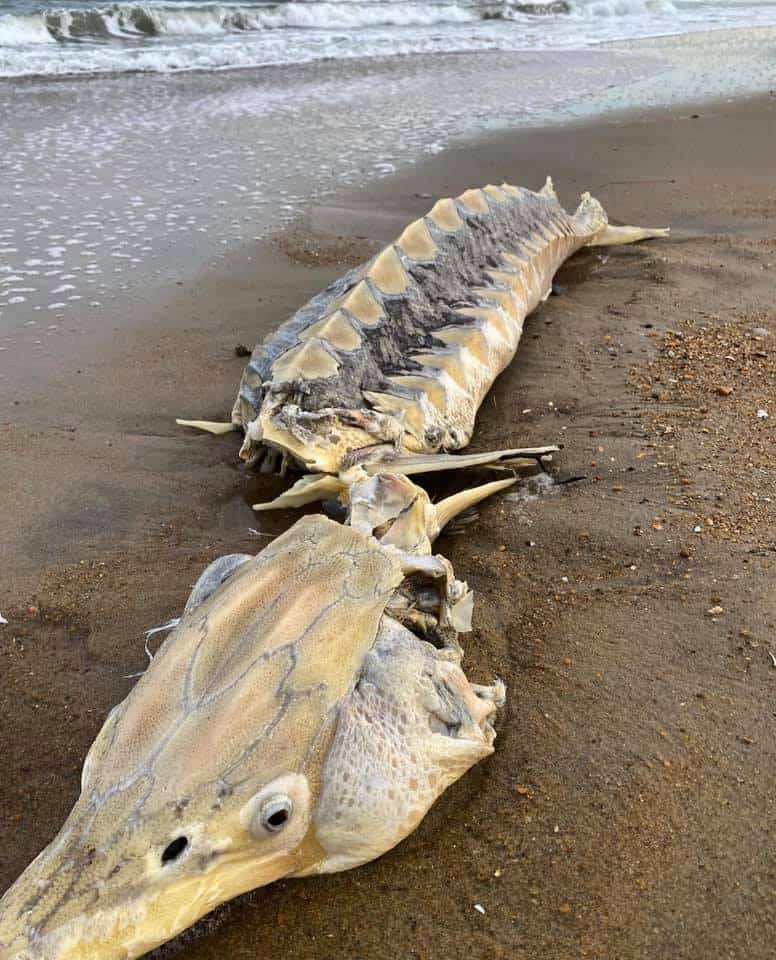John Byrd has been fishing the same 14-acre Virginia pond for around 20 years. He usually fishes for largemouth bass, but has caught other species in this Caroline County hideaway in the Rappahannock rivershed.
Sometimes he catches chain pickerel, and he even caught a citation (over 24 inches) pickerel this year. But the pickerel he caught a few weeks ago was totally unexpected and bizarre, almost like a creature from the Avatar films. Its mouth was brilliant blue, not a color often found in Bay-region wildlife.

Chain pickerel are normally pale green to yellowish on the sides. A darker chain-like pattern on their sides gave rise to their name. They are found throughout the eastern united states in ponds, lakes, smaller rivers, and occasionally in brackish waters. They are aggressive predators, feeding mostly on smaller fish. They are fun to catch.
Byrd was fishing a Whopper Plopper for bass when the pickerel hit. The Whopper Plopper is a top-water lure, so you get to watch the fish attack the lure. Top-water is Byrd’s favorite way to fish. After the pickerel smashed Byrd’s lure, Byrd reeled it in to the boat. He did not know what to think when he saw that striking blue mouth.
“I was scared to touch it. I thought it may be poisonous,” he said.
It was not poisonous, but was a very rare catch. According to Scott Herrmann, a Virginia Department of Wildlife Resources (DWR) regional fisheries biologist, the fish was exhibiting a genetic pigment mutation but was otherwise normal.
“The coloration expressed by the blue pickerel is extremely rare,” said Herrmann. “It pretty much falls into the one-in-a-lifetime category of catches. The normal coloration expressed in the green of a chain pickerel is from the xanthins of the yellow pigments. Blue pickerel express the rare mutation that is axanthic.”
Axanthism is a genetic mutation that limits an animal from producing yellow pigment.
Byrd saved the catch because it was so unusual. After contacting DWR, and learning that the fish was rare and not harmful, Byrd decided to have it mounted. Byrd can’t wait to share the catch with friends.
“I just consider myself blessed an lucky to have caught it,” he said.
-Kendall Osborne




